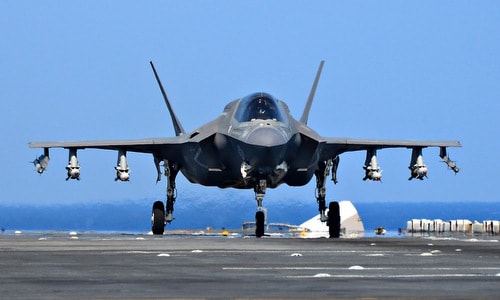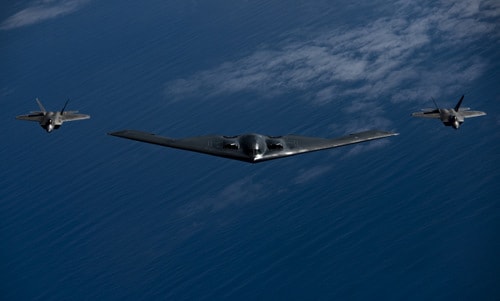Coordination of operations of three US stealth aircraft in the Pacific
The combat scenario simulates a large-scale war, requiring the full might of the US military to deal with a rival superpower.
|
The US F-35B in "Beast" mode. Photo:US Navy. |
The US Marine Corps' F-35B stealth fighter took off from the USS Wasp amphibious assault ship in the Pacific Ocean on February 3, carrying four GBU-12 guided bombs and two AIM-9X short-range air-to-air missiles. This is the first time the US F-35 fighter has used "Beast" mode in combat, and is also part of the coordinated training of the trio of US stealth aircraft in the Pacific.BusinessInsiderreport
"We're going to be taking off from the USS Wasp, engaging enemy aircraft, hitting simulated targets with precision weapons under the wings and hidden in the fuselage, then returning to land on the landing ship," said Lt. Col. Michael Rountree, commander of the F-35B squadron on the USS Wasp.
The "Beast" mode was used by the F-35B fighters on "Day Three" of the all-out war scenario in the Pacific, when the enemy's air force and air defense were completely suppressed. The task of suppressing the enemy's air defense network and air force was assigned to the "stealth killer" pair of B-2 bombers and F-22 fighters deployed on "Day One" of the campaign.
"The B-2s have been operating in Hawaiian airspace, participating in training to deal with real-life threats under the escort of F-22 fighters. The Pacific is a very important operational area in the future," Lieutenant Colonel Robert Schoeneberg, commander of the 393rd Bomber Squadron of the US Air Force, revealed.
The B-2 is capable of carrying many types of heavy weapons such as concrete-piercing bombs and thermobaric bombs, while the F-22 is considered the spearhead of all US preemptive strikes, paving the way for non-stealth fighters.
|
B-2 and F-22 formations in the sky off the coast of Hawaii. Photo:USAF. |
The exercise took place in the context of China stepping up its military activities in the Pacific. Beijing has repeatedly deployed strategic bombers and fighters, as well as air defense missiles and radars to the Paracel Islands and artificial islands it illegally reclaimed in Vietnam's Spratly Islands, and has also deployed the DF-26 ballistic missile, dubbed the "aircraft carrier killer" with a range covering the East Sea.
These moves show that China is trying to block US operations in the East Sea, forcing its navy and air force to only operate in the western Pacific Ocean. Many Chinese military generals have openly mentioned war with the US and proposed the solution of sinking Washington's super aircraft carriers.
Beijing is also seeking to develop anti-stealth technology, aiming to neutralize the biggest advantage of the US trio of F-22, F-35 and B-2.
"The dense radar network in the East Sea can help China detect stealth aircraft from the side or rear hemisphere, where the radar reflection signal is larger than the front hemisphere. Target data can be transferred to air defense systems to attack the F-35Bs," Bryan Clark, an expert at the US Center for Defense Budget Assessments (CSBA), commented.



